Plant Description
Peperomia plants are a cheerful addition to workspaces and homes. These semi-succulents are popular with new plant parents due to their minimal maintenance needs. Consisting of more than 1500 tropical and subtropical species, the Peperomia genus is one of the largest in the Piperaceae family and is closely related to the black pepper plant.
Many Peperomia plants sport waxy, thick leaves that retain water, and for this reason, are considered semi-succulent. Also commonly called the radiator plant, Peperomia plants thrive in bright light and warm environments and are slow-growing, durable, and air-purifying.
Peperomia plant facts
| common name | Peperomia, Pepper Elder, Shining Bush Plant, and Man to Man |
| botanical name | Peperomia spp. |
| no. of species | 1500+ |
| family | Piperaceae |
| biological life cycle | perennial |
| foliage | evergreen |
| mature size | bushy varieties grow 6-12 inches wide and tall, trailing varieties may grow tendrils up to 3’ long |
| time to maturity | 2-5 growing seasons |
| origin | Central America, northern South America, Africa |
| light conditions | bright, indirect light |
| soil type | loose, well-draining, and acidic soil. Epiphytic species enjoy a growing medium that’s high in moisture-retaining tree bark |
| soil pH | Slightly acidic, 6-6.5 works best |
| USDA Zone | Hardy to zone 10 |
| toxicity | non-toxic to both humans and pets |
Peperomia plants are native to tropical and subtropical regions in Central America and northern South America. A small subset of species can also be found in Africa. Many Peperomia species are also epiphytes, which means their aerial roots absorb moisture and nutrients from the air. That’s plant magic for you!
There is a huge variety of colors and textures within the Peperomia family. In general, most species have thick stems with lance, oval, or heart-shaped leaves. Some plants boast dark green leaf foliage, while others have striped, variegated, or marble patterns. Peperomia obtusifolia, aka the Baby Rubber Plant, is popularly known and loved as a smaller version of the Rubber Plant.
Trailing varieties like the Teardrop Peperomia make a dreamy addition to hanging baskets in your living space. Mix a few colorful varieties of Peperomia into your indoor succulent dish garden for life and texture, while keeping your plants grouped by similar care needs.
Popular varieties of peperomia plants
Peperomia plants come in a wide array of different species, varieties, and cultivars that all make great houseplants. These include:
- Baby Rubber Plant (Peperomia obstusifolia)
- Peperomia Hope (Peperomia rotundifolia)
- Radiator Plant (Peperomia deppeana)
- String of Turtles (Peperomia prostrata)
- Teardrop Peperomia (Peperomia polybotrya)
Popular variegated Peperomia types include:
- Watermelon Peperomia (Peperomia Argyreia)
- Red Edge Peperomia (Peperomia Clusiifolia)
- Emerald Ripple (Peperomia Caperata)
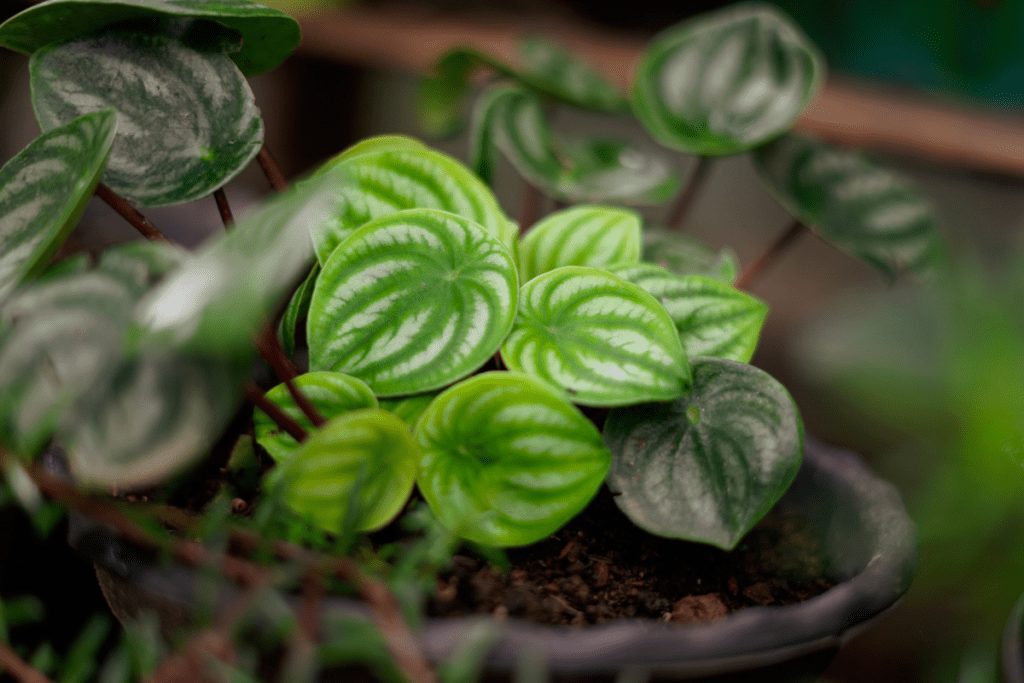
How to care for peperomia plants
Peperomia light requirements 🔆
Best light: bright, indirect light
Peperomia plants prefer bright, indirect light. With insufficient light, Peperomia plants lose color, drop leaves and stop producing new leaves. Avoid bright, direct sun as this can cause foliage burn.
While Peperomia plants do prefer brighter light, it is possible for them to grow in partial shade and low light.
Peperomia water requirements 💧
Water requirements: soil should dry between waterings
Water your Peperomia plant about every 1-2 weeks (more often if the growing substrate completely dries out). The top layer of soil should dry out between waterings. Avoid over-watering Peperomia, as this can cause root rot and lead to fungus gnat infestation. Saving a drowning peperomia is possible, though – just make sure to do it quick before too much trouble arises.
During the growing season, and in brighter light conditions, be sure to water the plant more frequently. You can always keep an eye on soil moisture levels with a moisture meter.
Peperomia humidity requirements 🌫️
Humidity preferences: Peperomia plants come from tropical areas that can experience relative humidity levels at above 90%. With that in mind, keep humidity to at least 40-50%.
As tropical plants, Peperomia plants enjoy moderate to high levels of humidity. Misting the foliage daily can help to increase humidity. Using a pebble tray with water or a humidifier are both great ways to increase humidity levels in the air, especially if you have many tropical indoor plants. Keep an eye on humidity levels with a hygrometer.
Peperomia temperature requirements 🌡️
Peperomia plants thrive in average to warm temperatures, between 65°F (18°C) to 85°F (30°C). It’s best to avoid the temperature falling below 60°F (15°C).
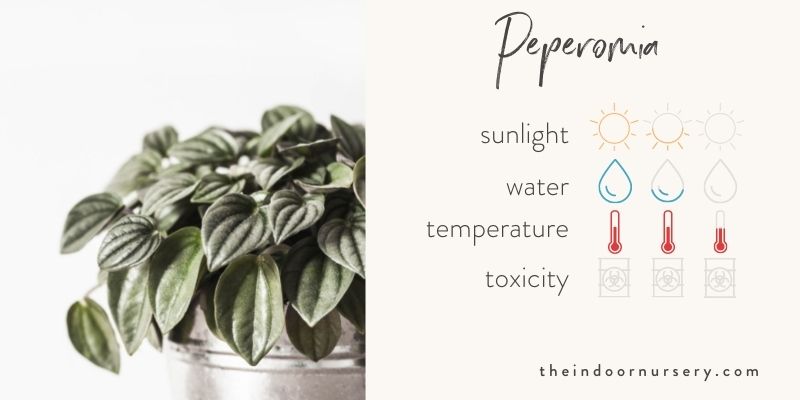
Peperomia fertilizer requirements 💩
Fertilizer preferences: Peperomias will quite enjoy a fertilizer that’s balanced at 3-1-2 (nitrogen-phosphorus-potassium ratio)
Use fertilizer on Peperomia during the growing season in the spring and summer. As an epiphyte, however, Peperomia can grow without any help from fertilizer in the proper conditions.
Peperomia soil requirements
Soil type: orchid bark potting mix
pH level: acidic
As an epiphyte plant that grows wild in tree hollows and on rotting wood, the Peperomia plant likes loose, well-draining, and acidic soil. An orchid bark potting mix, which usually consists of tree bark and water-retaining material, is well-suited to most Peperomia varieties. Amending the potting mix with peat moss can also help to retain moisture and nutrients. In general, the soil pH should be acidic.
Repotting peperomia plants
As a slow-growing plant with a shallow root system, Peperomia plants do not need to be re-potted frequently. Choose a pot that just fits the root ball with space to grow, but not too much soil. Re-pot every 2-3 years with fresh soil.
Propagating peperomia plants 🌱
Similar to succulents, Peperomia plants are easily propagated by taking cuttings.
Start by removing a leaf with about an inch of stem from the original plant. The most ideal time for propagation is during the growing season in the spring. Place the cutting in a small pot of soil and cover it with a bag or plastic to trap in moisture and create a greenhouse environment. The soil should never dry out and moisture levels should remain high while the plant is rooting. Once the cutting has formed new roots after a few weeks, it can be placed in a slightly larger pot for further growth.
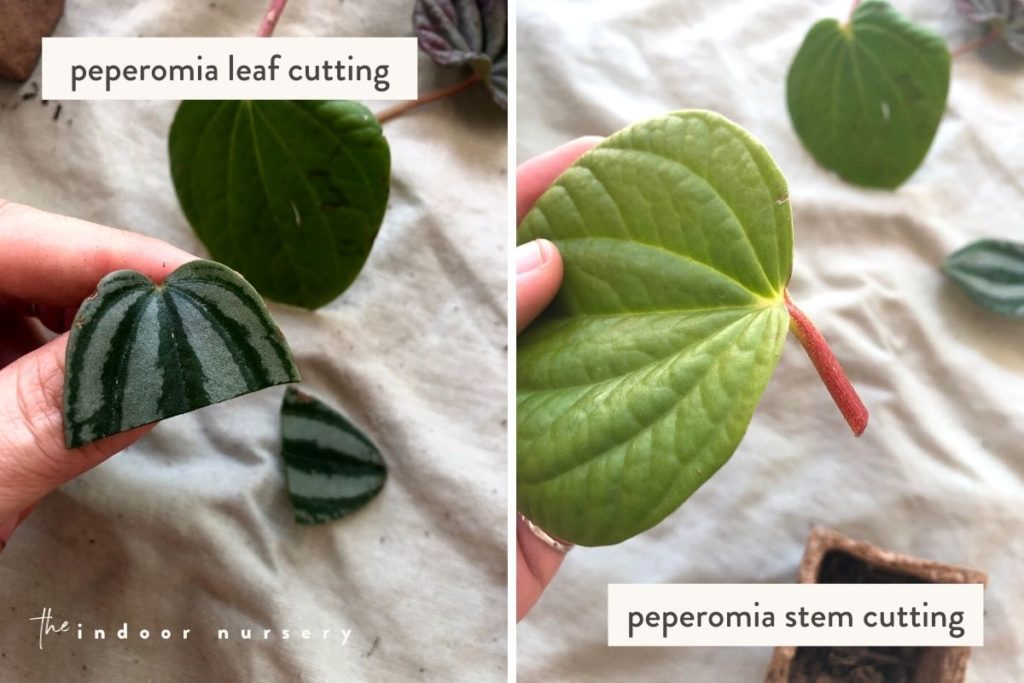
Pruning peperomia plants 🌿
If any leaves at the base of the plant have dried or wilted, they can be removed by gently Reducing leggy-looking vines and improving plant bushiness by pruning Peperomia lightly in the early spring. Use clean garden shears to remove undesired growth from just above leaf nodes around the crown of the plant. This will help to promote more branching and growth.
Pests and diseases 🐛
Pests: general house pests, treatable with insecticidal soap or neem oil
Disease: leaf spot and root rot
Peperomia plants are susceptible to common house pests including mealybug, spider mite, and whitefly. These pests should be treated as soon as possible to prevent infestation of your other house plants. Use a simple insecticidal soap or neem oil to clear these common pests away. Regularly inspect the foliage as a preventative measure to keep pests away!
The Radiator Plant is prone to a few diseases, including Leaf Spot and Root Rot. Leaf Spot can be treated with a simple baking soda and water combination. There are also plenty of treatment products on the market, including Patch Pro. For root rot, ensure that the soil is well-draining and that no water is sitting in the saucer underneath the pot after watering.
Peperomia plant care tips
- Peperomia plants are a great indoor plant option and can thrive outdoors in the right conditions. USDA hardiness zones 10-12 are recommended for outdoor planting.
- Choosing the right pot is crucial for the slow-growing Peperomia plant. Pots must have sufficient aeration and drainage. Orchid pots with large drainage holes are a good solution, in combination with orchid bark or a layer of chunky gravel to keep the soil from filtering out through the drainage holes. Terracotta pots are great for Peperomia due to their porosity; the clay allows excess water to seep out, preventing root rot and disease.
Common Problems / FAQs:
Yellow leaves, black stems
–> It’s possible the Peperomia plant is experiencing overwatering or root rot. Allow the top layer of soil to dry out completely before watering again, and do not leave any water in the saucer under the pot after watering.
Foliage is dull in color, lots of leaves are dropping
–> The plant is not receiving sufficient light. Be sure that it’s placed in bright, indirect light for at least part of the day. Dull foliage may also indicate over-watering, so check the above tip too!
Leaves are curling or drooping
–> Most likely, the plant is being under-watered. Although the top layer of soil should be dry, the entire pot should not dry out before watering again.
Shop our recommendations
- The Best Hydroponic Tower For Indoor Gardening
- 10 Best Worm Composter Bins For Easy Homemade Compost
- The Best pH Meter For Soil
- The 6 Best Dehumidifiers For Grow Tents
- The Best Complete Indoor Hydroponic Grow System
- 5 Best Grow Light Strips For Indoor Plants
- TESTED: Aerogarden vs Click and Grow Smart Garden
- Our *hands on* MARS HYDRO TSW 2000 review (with photos)
- 7 Best Hygrometers For Indoor Plants
- The Best Coco Coir For Your Plant’s Healthiest Root System Ever

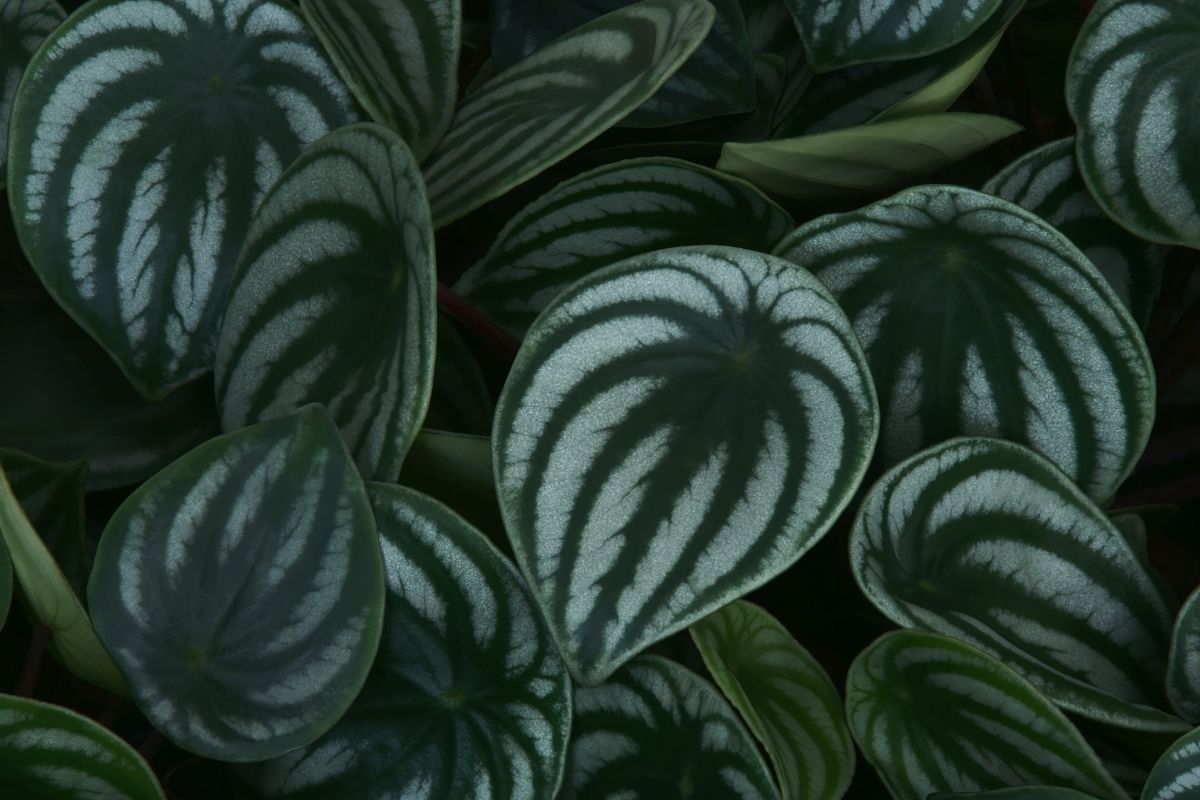
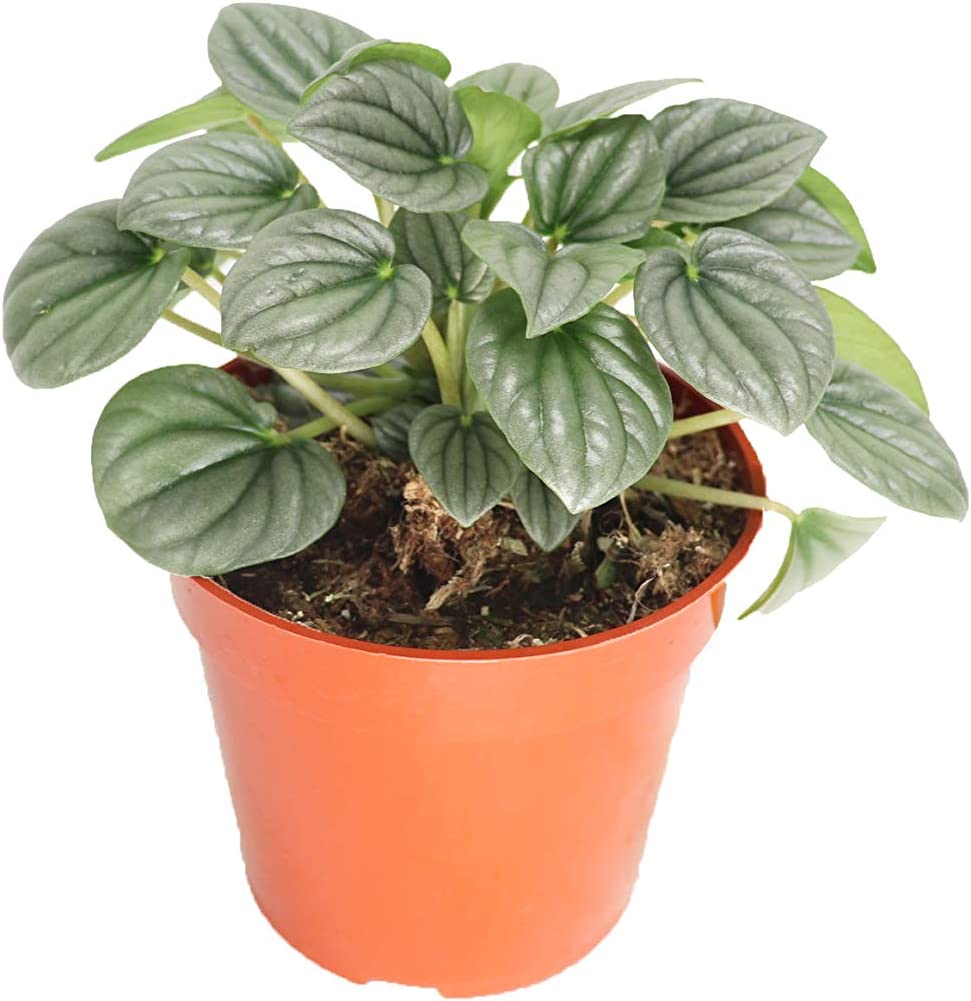

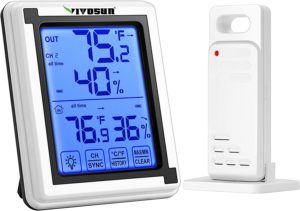



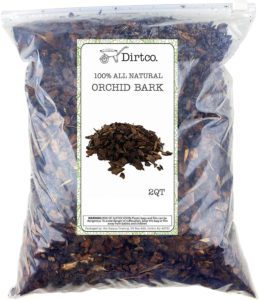
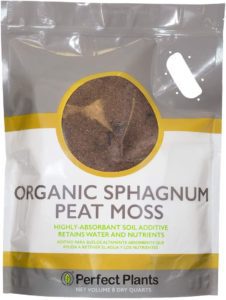



Hey, Marcia! Thanks for reading :) gosh, that's a great idea to double up on your watering globe and spike.…